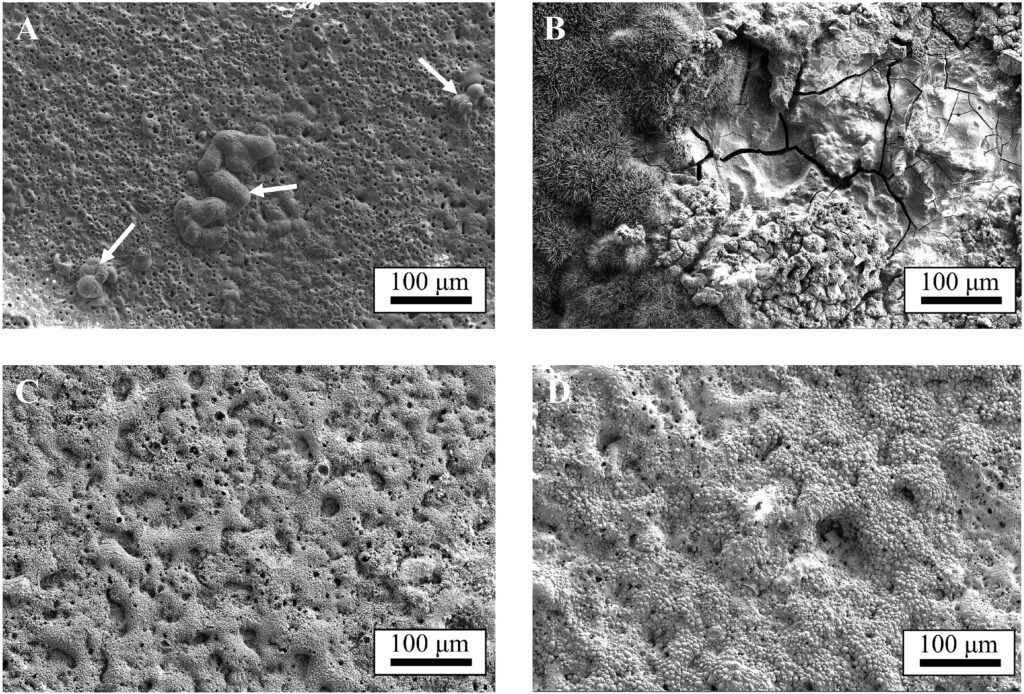• Researchers from IMDEA Materials, in conjunction with the Helmholtz-Zentrum Hereon Institute of Surface Science and Meotec GmbH, have undertaken the first-ever comparison of corrosion resistance in magnesium (Mg) and zinc (Zn) bioalloys produced by extrusion and additive manufacturing.
• The study, which paves the way for safer, longer-lasting biodegradable implants, showed that plasma electrolytic oxidation (PEO) surface treatment improves corrosion resistance across all tested samples.
In a first for the field of bioabsorbable metals, researchers from IMDEA Materials Institute, alongside collaborators from the Helmholtz-Zentrum Hereon Institute of Surface Science and Meotec GmbH, have conducted a pioneering comparison of the corrosion resistance of WE43 magnesium and Zn1Mg zinc alloys produced via extrusion and Laser Powder Bed Fusion (LPBF).
Published in Surface and Coatings Technology, the study is the first to use electrochemical testing in a buffered saline solution to compare how these two manufacturing routes affect the degradation of these clinically relevant biodegradable metals.
“To our knowledge, this is the first time that these two manufacturing techniques have been compared in terms of corrosion resistance for these materials,” said first author Guillermo Domínguez.
The results show that the LPBF-fabricated samples corroded significantly faster than their extruded counterparts. In WE43, this was linked to yttrium oxide particles present in the LPBF samples, which weakened the protective effect of the corrosion layer. In Zn1Mg, the higher corrosion rate of the LPBF samples was attributed to an increased volume of eutectic phases, which accelerated microgalvanic degradation.
A eutectic phase is a microstructural feature formed when two elements solidify together at a specific ratio and temperature. An increased volume of eutectic phases creates more interfaces with the Zn matrix, forming numerous microgalvanic cells that accelerate localised corrosion. This speeds up overall material degradation.
To counteract this, the team applied a plasma electrolytic oxidation (PEO) surface treatment.
“To enhance corrosion resistance, a PEO process was applied to the samples,” explained Domínguez. “This treatment formed the expected oxide layer that improved protection across all tested materials compared to their untreated counterparts”.
Interestingly, for Zn1Mg, the LPBF samples actually outperformed the extruded ones after PEO treatment.
“However, the WE43MEO LPBF specimens showed high corrosion rates despite PEO treatment, which was linked to heterogeneities in oxide layer thickness. In contrast, PEO treatment had the opposite effect on Zn1Mg samples, where LPBF specimens demonstrated greater corrosion resistance than the extruded ones,” he added.
This disparity was tied to phosphorus-rich protective layers formed during surface modification, leading to higher phosphorous content in the LPBF PEO layer, which promoted the formation of inert phosphate phases, stabilising the protective oxide layer.
The experimental component of the research was carried out by Domínguez during a research stay at the Helmholtz-Zentrum Hereon Institute of Surface Science as part of the Horizon Europe BIOMET4D project, coordinated by IMDEA Materials Institute. The samples were fabricated by project partners, Meotec GmbH, while the collaboration with Dr. Carsten Blawert’s Department of Functional Surfaces at Hereon provided access to state-of-the-art electrochemical testing equipment.
Alongside Domínguez, the researchers behind the paper include Drs. Jennifer Patterson, Mónica Echeverry Rendón, Muzi Li and Profs. (UPM) Jon Molina and Javier LLorca from IMDEA Materials Institute, Simon Pöstges and Dr. Alexander Kopp from Meotec GmbH, and Drs. Maria Serdechnova and Carsten Blawert from the Helmholtz-Zentrum Hereon Institute of Surface Science.
By controlling how these materials are manufactured and treated, researchers can optimise their behaviour inside the body, reducing risks and improving patient outcomes.

This investigation was carried out with the financial support of the BIOMET4D project (Smart 4D biodegradable metallic shape-shifting implants for dynamic tissue restoration). This project has received funding from the European Union’s Horizon Europe research and innovation programme under grant agreement No 101047008. Views and opinions expressed are, however, those of the author(s) only and do not necessarily reflect those of the European Union or the European Innovation Council and SMEs Executive Agency (EISMEA). Neither the European Union nor the EISMEA can be held responsible for them. ME-R acknowledges the financial support of the BIOFUN3D project (The introduction of geometrical gradients in Zn based scaffolds by powder bed laser fusion). Project PID2022-138417OB-C22 funded by MICIU/AEI/10.13039/501100011033 and by ERDF/EU.
